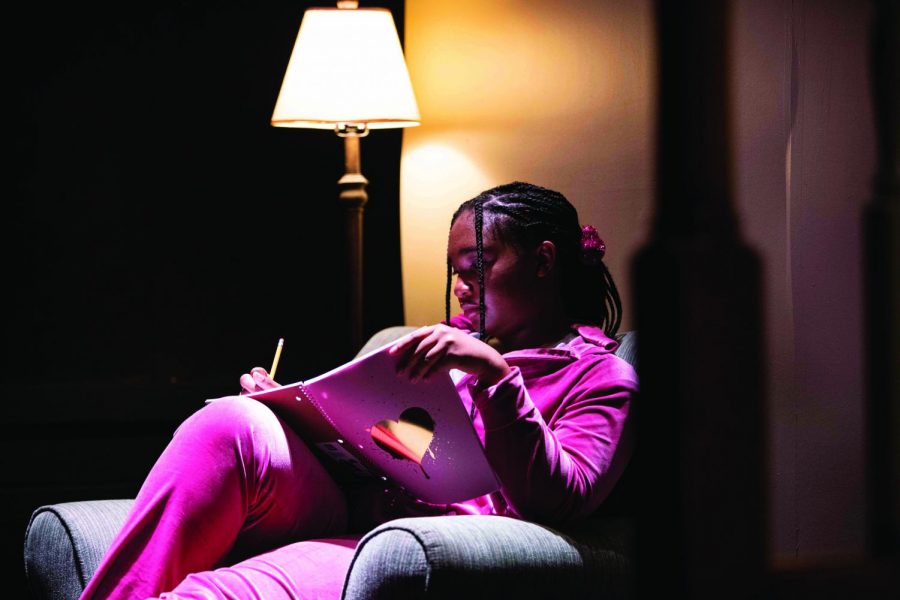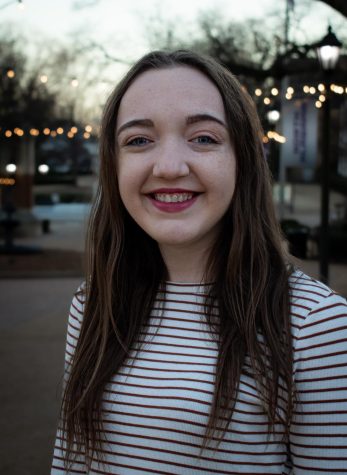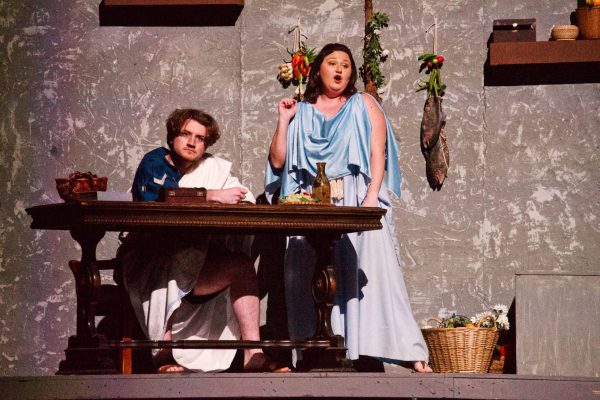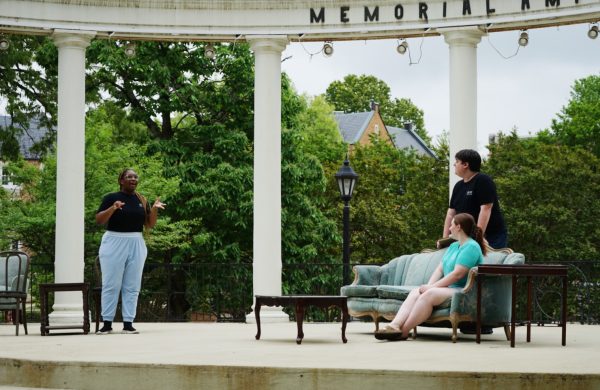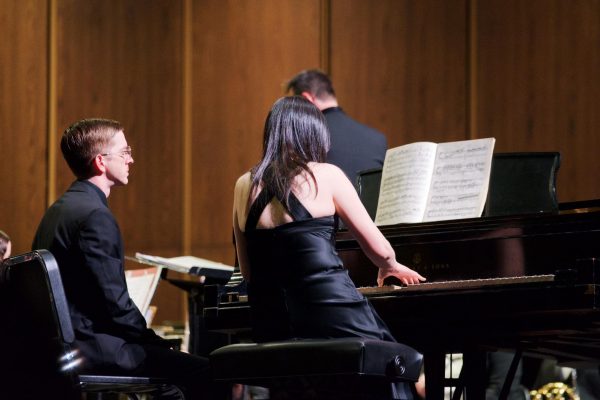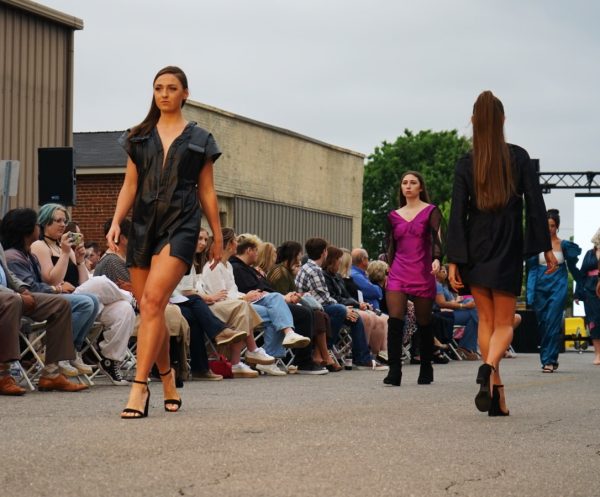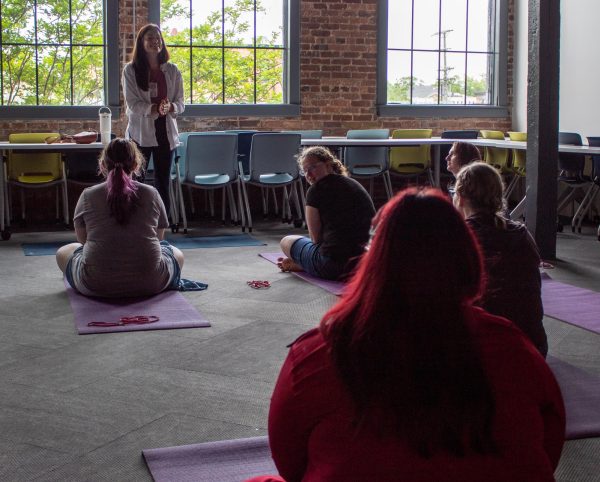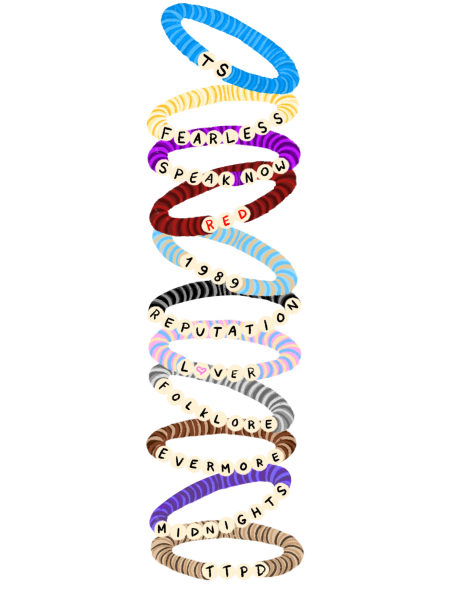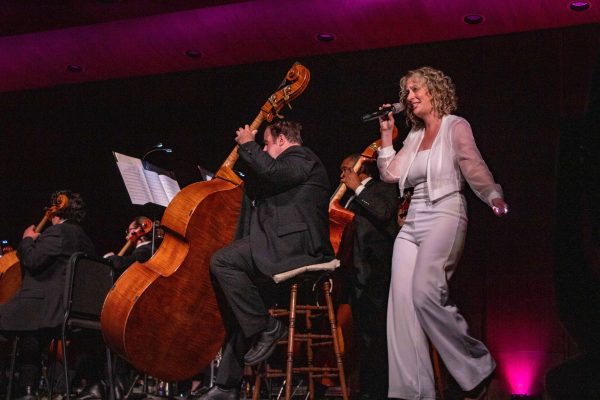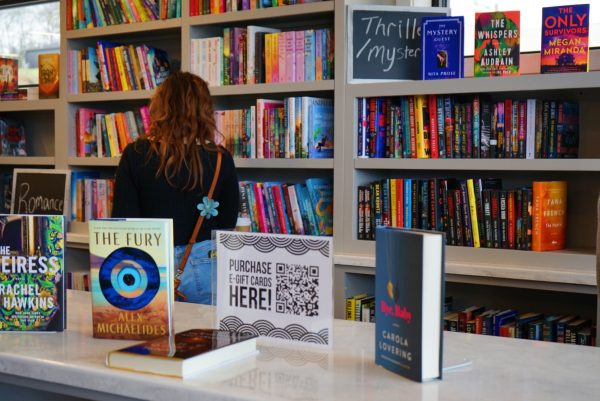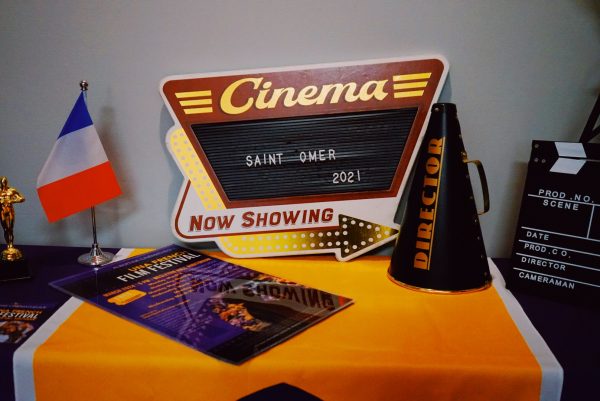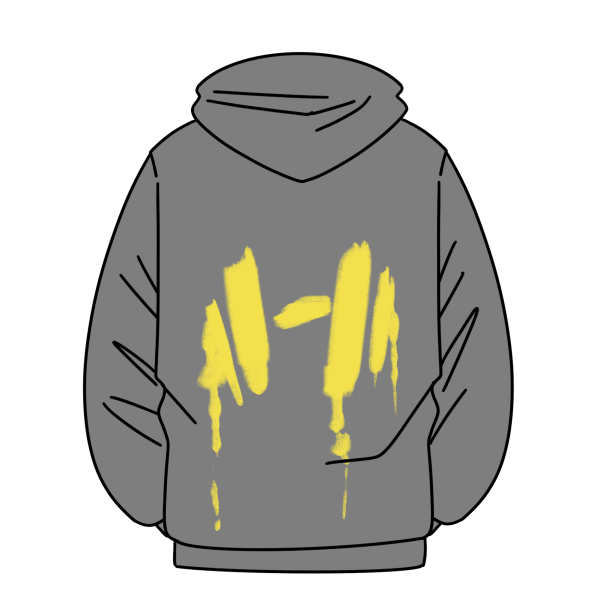‘Chatroom’: the show must go online
Freshman, Kennedy Edwards, passes time while other characters interact. During the show, no one left the stage, so all the actors were constantly seen by the audience.
March 12, 2021
The stage has been dark for over a year now as theaters have been closed due to Covid-19 restrictions. However, the University of North Alabama theater department has made a triumphant return with its socially-distanced production of “Chatroom” by Enda Walsh.
Walsh is an Irish writer with an extensive repertoire of work, including “Lazarus,” the musical and book crafted by David Bowie.
“Chatroom” was directed by Keelie Sheridan, a visiting Assistant Professor of Acting and Directing for UNA’s Cinematic Arts and Theater department.
Sheridan became a fan of Walsh when she was getting her masters in Directing in Ireland.
The selection of the play was optimal for social distancing practices, as the six characters are all, quite literally in their own worlds.
“I didn’t want to do a show in which our safety measures would feel like a detraction from the play. We wanted to find a piece that could support this physical separation we needed for the actors and audience to be safe,” Sheridan said.
To enforce social distances and safety during the time of Covid-19, the auditions were held on Zoom.
“It was important to me to find actors who would bring love and respect and humanity to this play,” Sheridan said.
The rehearsals also took place on Zoom until the week prior to performance. The actors only had a week to rehearse with the physical set.
However, the cast was thankful to be able to put on a live production amidst the ongoing pandemic, especially freshman, Kennedy Edwards (Emily), who did not think that she would get this experience in her freshman year.
“I was prepared to do an online production or maybe just some workshops. I was really excited to hear that we were bringing back live theater. It’s been a really cool process, I have to admit,” she said.
This play takes on very heavy subject matter, that of suicide, self harm, bullying, abandonment and manipulation.
In the story, there is an online chat room that connects teenagers from the same area, but they do not use their full names or tell where they live or what school they attend. All of the characters are ages 15-16. They have varying personalities and interests. With the play being set in the mid 2000’s, they talk of Harry Potter, Britney Spears and NSYNC.
Although some of the pop culture they reference and the technology used may be slightly outdated in 2021, the problems that these kids face are all too real. However, it captures the anonymity of the internet at this time. Nowadays, it might be easier to find a local on Instagram by just a first name, given their interests in the chat.
Of the six cast members, they have one thing in common: they want to be seen and heard. They crave purpose and relevance.
William is looking for a cause to support as he feels ashamed of his generation’s lack of agenda. Eva is witty and seems to thrive off of forcing her opinion on the other users. Jack is focused on school and has a desire to do the right thing and stand up for what he believes is right. Emily struggles with her identity as she battles an eating disorder. Laura craves a way to improve the world, and does so by listening to others who share their suicidal thoughts online, ensuring them that they have someone who will listens. She is adamant to convince everyone, especially herself, that this contribution is enough. New chat room user Jim has suffered a life of loss as he was abandoned by his father at an early age. He lost his childhood best friend, and has always struggled to fill the shoes of his three older brothers, who all have different interests and personalities. He feels hated by his own mother who associates him with his absentee father and feels out of place in the religious setting. He begins to contemplate thoughts of suicide, but repetitively says “it’s not that bad yet,” a common sentiment of teens dealing with these same issues.
“All of these characters are very vulnerable, though they have vastly different ways of expressing it, and all have flaws, quirks, and personal conflicts that they wrestle with. It’s easy to play some of them as one-note, but they’re much more complex than that, and that’s what I looked for in the auditions. Complexity, truth and sensitivity to the material in this script,” Sheridan said.
At the beginning, the chats are about subjects such as the aforementioned Harry Potter and Britney Spears, but they quickly turn darker.
William and Eva become the main villains of the story, as they encourage Jim to commit suicide, making himself a martyr of the teenage experience. Laura, Jack and Emily all try to help Jim see that there are other options, but they are quickly ostracized from the group by the bullies, who accuse them of not actually caring about Jim. Eva and William are the strong voices, telling Jim that suicide is his only option and that anyone who tells him not to doesn’t have his best interest at heart.
This method of gas-lighting is often seen in these situations, and it is portrayed so well in this show and by this cast that it almost felt too real to me, who has dealt with many of the issues addressed. It took me back to the feeling of having one’s entire world inside of four painted walls in the suburbs and only having true connections with people behind a screen. Teens are left unable to see the world outside of their own.
In fact, the set was made to feel just that way. The actors never leave the set.
Designed by Vince Salpietro, the set gives each character their own, socially distanced stage.
“They made the set for social distancing. There are six cubicles and everyone has their own. Each cubicle is lined with plastic. The audience is socially distanced. We have so many shows so people can see them since the audience isn’t going to be that big,” said Kennedy Edwards.
Cole Johnson who played William and Shannon O’Neill who played Eva did an excellent job of making the viewer hate them. I applaud Johnson for how many push-ups he did during a scene he did not speak in.
Ed Sparks, who portrayed Jim, was the star of the show. His performance was compelling and so believable that if I ever run into him on campus, I’ll have to hug him and make sure he’s okay.
How do the actors themselves separate themselves from the dark material that they have to recite daily? How do they keep the intense thoughts of their characters from infiltrating their own mindsets?
Sheridan makes sure that her actors are taken care of, above all else.
“The material in this play is very heavy and normally, in an in-person rehearsal room, it’s much easier for me to take the pulse of the group dynamics, to check in on the actors and creative team and make sure there’s a healthy separation between the world of the play and the real world,” said Sheridan.
Sheridan added, “We spent our first few weeks of rehearsal on Zoom, when they were all making sense of the script together. It made using tools like de-roling and boundary practices feel more pertinent than ever. This was also important when we were in rehearsals together before the set was built. Since everyone was wearing masks, it was much harder for her to read the actors’ faces, so they worked to consciously create an environment of trust and support.”
The staff is also thankful for her dedication and efforts to care for her staff. Edwards infers that she was the glue that held the separated rooms of the set together.
“She’s a really good director. She would ask us questions about our characters like we were the character, and it really helped me become “Emily.” I have never been approached like that with my previous directors. You can tell she actually cared for us. She gave all of us an equal amount of attention. Without her, I don’t think the show would have gone as well,” she said.
“When we had the snow week, I thought we would have to push back the show dates and that we would be behind, but we weren’t. I think it’s because of Keelie. She’s a gem,” she added.
This work was ultimately chosen because of the harsh reality it portrays, while unifying humans through our universal desire to be heard and seen, something we all need a reminder of in this hard time.


